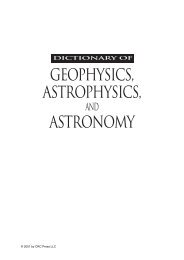tc dokuz eylül university institute of social sciences translation and ...
tc dokuz eylül university institute of social sciences translation and ...
tc dokuz eylül university institute of social sciences translation and ...
You also want an ePaper? Increase the reach of your titles
YUMPU automatically turns print PDFs into web optimized ePapers that Google loves.
CHAPTER ONE<br />
I. Punning<br />
A. What is a pun?<br />
A pun is a literary form whereby a portrayal <strong>of</strong> a word or a phrase has several<br />
meanings, all <strong>of</strong> which apply. This can be achieved by the same sound with a<br />
different spelling or the same spelling with a different meaning, <strong>and</strong> it causes the<br />
reader to consciously acknowledge the differences <strong>and</strong> the similarities <strong>of</strong> the word or<br />
words. All at once the same sentence can have totally different meanings. This<br />
wordplay brings an amusing <strong>and</strong> yet ambiguous curve to the context <strong>of</strong> the story.<br />
What someone underst<strong>and</strong>s from a pun changes from person to person, time, culture,<br />
sex, background <strong>and</strong> worldview. The clever <strong>and</strong> humorous thing is the way that an<br />
author writes a pun in which both meanings <strong>of</strong> the word make sense <strong>and</strong> are<br />
understood or at least considered. It is a part <strong>of</strong> human nature to try to use humor or<br />
irony when communicating with other people, <strong>and</strong> if both parties have the same<br />
domain <strong>of</strong> human knowledge <strong>and</strong> experience, it will have a humorous effect on the<br />
addressee. If the receiver underst<strong>and</strong>s the pun both s/he <strong>and</strong> the punster will be united<br />
in taking pleasure from it; but if they do not, the punster may also derive pleasure<br />
from it, thinking that s/he is superior (Alexieva, 1997; 139). Puns can also be cruel or<br />
unkind as well as a source <strong>of</strong> humor. Lewis Carroll is very fond <strong>of</strong> puns <strong>and</strong> uses<br />
them to good effect in Alice’s Adventures (leasttern.com).<br />
Dirk Delabastita, a scholar <strong>of</strong> Translation Studies doing numerous studies <strong>and</strong><br />
research on punning <strong>and</strong> its <strong>translation</strong>, suggests a more cognitive <strong>and</strong> linguistic<br />
definition as follows: “Wordplay is the general name for the various textual<br />
phenomena in which structural features <strong>of</strong> the language(s) used are exploited in<br />
order to bring about a communicatively significant confrontation <strong>of</strong> two (or more)<br />
linguistic structures with more or less similar forms <strong>and</strong> more or less different<br />
meanings” (Delabastita, 1996; 128).<br />
There is not a consensus among scholars on the difference between wordplay<br />
<strong>and</strong> pun. The two terms are mostly used interchangeably. For instance, Delabastita<br />
uses both terms in his introductory articles in both Traductio (1997) <strong>and</strong> The<br />
Translator (1996). (For further references, see von Flotow 1997, 46; de Vries <strong>and</strong><br />
8
















